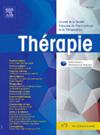Exposure assessment of titanium dioxide via drugs available on the French market: A nationwide descriptive study
IF 1.8
4区 医学
Q3 PHARMACOLOGY & PHARMACY
引用次数: 0
Abstract
Purpose
Based on potential adverse health effects including genotoxicity concerns, the European Union banned titanium dioxide (TiO2) as a food additive in 2022, but food-grade TiO2 can still be used in pharmaceutical products.
Methods
This study described the presence of TiO2 in drugs available on the French market and estimated the population exposure to TiO2 through drug consumption. We used annual drug claim data aggregated at the national level together with data on the TiO2 content of pharmaceutical products available on the French market in 2001–2020.
Results
Of the 17 171 pharmaceutical specialties identified on the French market between 2001 and 2020, 38% contained TiO2. That figure reached 95% for capsules, 92% for film-coated tablets, 74% for coated tablets and 66% for soft capsules. Only 1% of non-oral specialties contained TiO2. The median TiO2 amount in one common dispensing unit was 1.5 mg for oral specialties containing TiO2. We estimated that the mean exposure to TiO2 per inhabitant through the consumption of reimbursed drugs between 2012 and 2020 was 1.71 mg per day, with women (1.81 mg/d) slightly more exposed than men (1.54 mg/d) and people older than 59 years (4.00 mg/d) much more exposed than younger people (1.24 and 0.21 mg/d for 20–59 and < 20 years old individuals, respectively).
Conclusion
This study highlights a widespread presence of TiO2 in drugs on the French market. The health impact of exposure to TiO2 through drug consumption should be evaluated in future epidemiological studies.
通过法国市场上的药物接触二氧化钛的评估:全国性描述性研究。
目的:基于对包括遗传毒性在内的潜在不良健康影响的担忧,欧盟于 2022 年禁止将二氧化钛(TiO2)用作食品添加剂,但食品级二氧化钛仍可用于医药产品:本研究描述了法国市场上的药物中是否含有二氧化钛,并估算了人口通过药物消费接触二氧化钛的情况。我们使用了全国范围内的年度药品索赔数据以及2001-2020年法国市场上药品的二氧化钛含量数据:结果:2001 年至 2020 年期间,在法国市场上发现的 17171 种药品中,有 38% 含有二氧化钛。这一数字在胶囊中达到 95%,在薄膜包衣片中达到 92%,在包衣片中达到 74%,在软胶囊中达到 66%。只有 1%的非口腔专用药含有二氧化钛。在含二氧化钛的口服特药中,一个普通配药单位的二氧化钛含量中位数为 1.5 毫克。我们估计,2012 年至 2020 年间,每个居民通过服用报销药物接触二氧化钛的平均量为每天 1.71 毫克,其中女性(1.81 毫克/天)略高于男性(1.54 毫克/天),59 岁以上人群(4.00 毫克/天)远高于年轻人(20-59 岁人群为 1.24 毫克/天,年轻人为 0.21 毫克/天):这项研究表明,法国市场上的药物中普遍含有二氧化钛。今后的流行病学研究应评估通过服用药物接触二氧化钛对健康的影响。
本文章由计算机程序翻译,如有差异,请以英文原文为准。
求助全文
约1分钟内获得全文
求助全文
来源期刊

Therapie
医学-药学
CiteScore
3.50
自引率
7.70%
发文量
132
审稿时长
57 days
期刊介绍:
Thérapie is a peer-reviewed journal devoted to Clinical Pharmacology, Therapeutics, Pharmacokinetics, Pharmacovigilance, Addictovigilance, Social Pharmacology, Pharmacoepidemiology, Pharmacoeconomics and Evidence-Based-Medicine. Thérapie publishes in French or in English original articles, general reviews, letters to the editor reporting original findings, correspondence relating to articles or letters published in the Journal, short articles, editorials on up-to-date topics, Pharmacovigilance or Addictovigilance reports that follow the French "guidelines" concerning good practice in pharmacovigilance publications. The journal also publishes thematic issues on topical subject.
The journal is indexed in the main international data bases and notably in: Biosis Previews/Biological Abstracts, Embase/Excerpta Medica, Medline/Index Medicus, Science Citation Index.
 求助内容:
求助内容: 应助结果提醒方式:
应助结果提醒方式:


